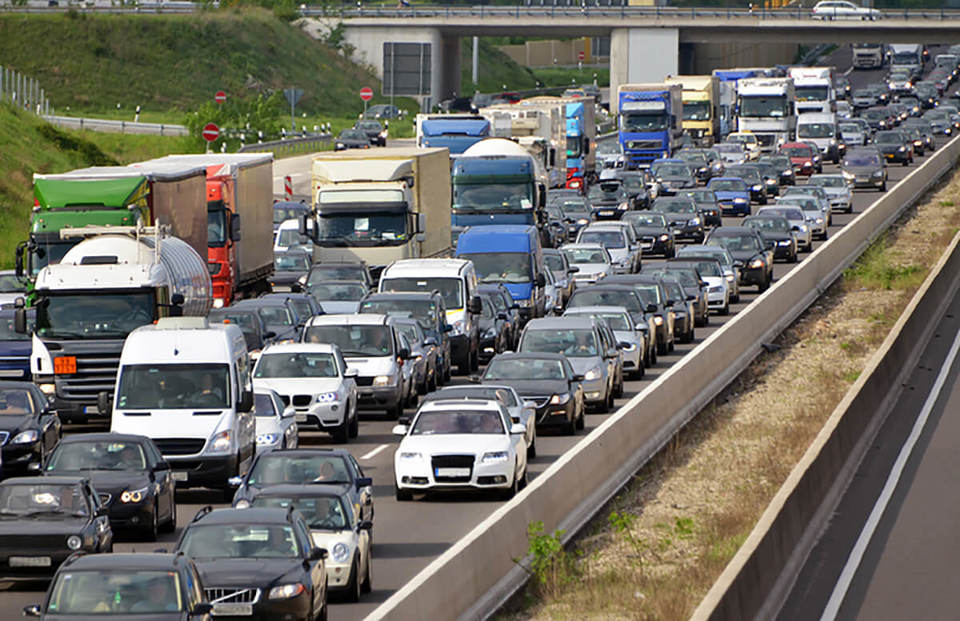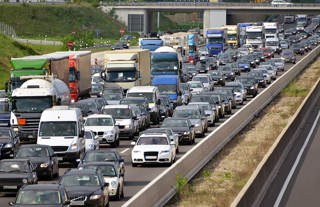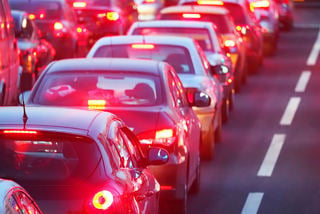This article first appeared in the September edition of Fleet News.
The number of cars, vans and heavy goods vehicles (HGVs) on the country’s roads are increasing beyond pre-pandemic levels at different times of the week, new data suggests.
Light and heavy commercial vehicles are now at their busiest since national lockdown was lifted and they are significantly surpassing what would be typically expected at this time of year.
Van traffic, for example, was a fifth higher than usual, at some 121%, on Sunday September 13, while HGV usage was even higher at 123%. Both are running some 5% higher than expected volumes during weekdays.
The figures, from the Department for Transport (DfT), show car usage was also slightly above expected levels on Saturdays and Sundays at the beginning of the month. However, it was still some 5-10% down during the working week.
Any reduction in traffic levels and improvement in air quality gained as a result of lockdown and homeworking, which led to the suspension of several clean air zone (CAZ) plans, is being threatened, according to environmental campaigners.
An increase in home deliveries, fuelled by a switch to online shopping, and people choosing the car over public transport appears to have offset potential savings.
PEAK TIMES 'DISAPPEAR'
New Government statistics suggest that both morning and evening rush hours have disappeared.
The latest figures for June from the DfT show that in the morning peak there was a 21.4 second delay per vehicle mile travelled on local A roads, compared with 56.7 seconds in February.
It is the same for the evening peak, which reported a 25.8 second delay per vehicle mile travelled, less than half of the 63.6 seconds reported before the pandemic in February.
However, data from the RAC, detailing traffic movements at the start of September, shows that an upturn in parents driving their children to school could be replacing commuter traffic volumes lost to coronavirus and homeworking, which was evident in the DfT's figures for June.
Public transport, meanwhile, is still struggling to attract typical passenger numbers expected at this time of year. National rail was carrying just over a third (36%) of expected passenger numbers on September 16, the last day figures are available.
National and London buses were carrying more than half (56%) of their typical passenger numbers and the London Underground just 35%.
Meanwhile, in the capital, new analysis by the Environmental Defense Fund action group, showed congestion outside its congestion charge zone was, on average, 18% higher than last year during the first week of September.
Congestion reached a peak on September 7, some 153% higher than 2019 levels.
Inside the congestion charge zone, it fell to just over half the level seen last year.
The charge to drive into the zone was suspended at the start of the lockdown in March, but was reinstated in May, and increased from £11.50 to £15 a day from June 22 – a 30% hike.
The zone’s hours of operation were also extended by the operator, Transport for London (TfL), to include Saturdays and Sundays, and by four hours a day – 7am to 10pm (6pm had been the cut-off).
The Environmental Defense Fund say these findings are particularly concerning for London’s air quality and it is calling for urgent action to reduce the number of vehicles and congestion on roads outside the city centre.
Oliver Lord, the Environmental Defense Fund’s head of policy and campaigns, said: “Traffic congestion is precisely what we should prevent as our polluted city emerges from lockdown.
“This analysis is a rallying call for action and a concerted effort from business to curb the record number of vans on our streets.”
London’s ultra-low emission zone (ULEZ), which currently covers the same area as the congestion charge zone, but only charges the most polluting vehicles, is due to be expanded from October 2021.
New cameras began being installed last month (August), ahead of its expansion to the North and South Circular – an 18-fold increase in size.
TfL says the larger zone is vital to ensure that, as London recovers from the coronavirus pandemic, one public health crisis is not replaced with another.
It estimates that the new, expanded ULEZ will reduce harmful nitrogen oxide (NOx) emissions from road transport by around 30% across the city.
Other local authorities, some of which agreed with Government to delay their plans to start charging the most polluting vehicles to drive into their city centres this year, have now put them under review.
COUNCILS TAKE STOCK
Leeds City Council announced last month that it was suspending the introduction of its CAZ while it re-assesses the air quality issues in the city.
If the city’s air pollution levels remain below legal limits, then the council will no longer have the crucial support of Government to introduce its CAZ.
Councillor James Lewis, deputy leader for Leeds City Council, said: “Given this uncertainty, our financial support will continue to be paused until the review is complete and we have received further direction.
“I recognise that at an already uncertain time, this latest update will be frustrating for many businesses. However, I would like to ask drivers and operators for their continued patience while we carry out this urgent review. I hope to be able to clarify the future of the Leeds CAZ in the autumn.”
Leeds City Council is now working closely with Government to review the long-term impact that the pandemic and other factors will have on the city’s air quality to understand whether pollution will ever reach illegal levels.
The council previously planned to launch its Class B CAZ on Monday, September 28. Buses, coaches, heavy goods vehicles, taxis and private hire vehicles, which failed to meet minimum emissions standards, would be charged for driving within the zone’s boundary.
Non-Euro VI HGVs, buses and coaches faced a £50 daily charge for driving in the zone, while non-Euro 6 diesel and non-Euro 4 petrol taxis and private hire vehicles would have incurred a £12.50 charge. Private vehicles would not be charged.
Days after Leeds announced its review, Bristol City Council said it was looking at alternative options to improve air quality and may reverse its decision to introduce a CAZ.
As a result of the pandemic, Bristol mayor Marvin Rees says travel habits in the city are changing and its pollution levels are lower.
He explained: “Our plans have always been about cleaning up our air in the fastest possible time and not being anchored to one method.”
Birmingham and Manchester’s plans for CAZs are moving full steam ahead, with Birmingham City Council approving a new air quality action plan for public consultation.
It includes a Class D CAZ, meaning drivers of all vehicles will be charged, including cars, if they do not meet the latest emissions standards. No date has been set for its introduction.
Meanwhile, Transport for Greater Manchester (TfGM) is developing a CAZ vehicle finance scheme to fleet operators of non-compliant vehicles ahead of the introduction of its CAZ in spring 2022.
Up to £120 million of Government funding will be made available by way of grants and contributory finance to provide support to around 30,000 affected owners and operators to replace HGVs, LGVs, taxis, private hire vehicles, coaches and minibuses.























Login to comment
Comments
No comments have been made yet.